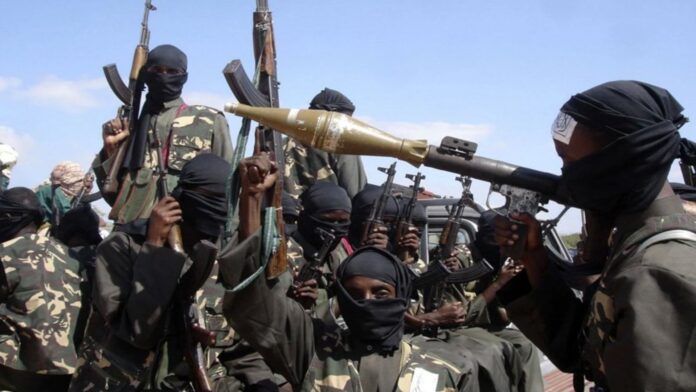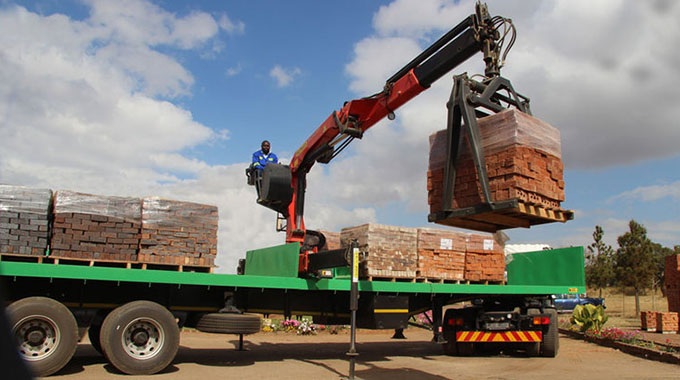
R.W. Johnson
Things are moving fast in the jihadist insurgency in the Cabo Delgado province of Mozambique.
Clearly aware that the multi-billion dollar gas investment by Total was reaching a critical new phase, the al-Shabaab insurgents quietly infiltrated the nearby town of Palma (population 75,000) as early as last November and launched their attack on the Mozambican army and police units present in the town on March 24. (The insurgents, popularly known as al-Shabaab, call themselves Al Sunnah wa Jama’ah.)
Their aim seems to have been to get at the foreigners staying at the Amarula Hotel – including many of those employed at the local Total gas facility. How many of these were killed is still unclear but Palma itself was pretty much destroyed.
At the same time the insurgents also attacked the Macomia district, further to the south, arriving by sea at Mocimboa da Praia Sede, a small port which they have attacked and taken once before.
At this point one should admit that our knowledge is hazy because whenever military action takes place in Cabo Delgado journalists find that it is quite impossible to get any comment or confirmation from Mozambique government sources in Maputo – often, indeed, nobody picks up the phone.
On this occasion, long after mercenaries attached to the Dyck Advisory Group (DAG) had confirmed that Palma had fallen to the insurgents, Maputo continued to deny that this was so.
Accordingly, the announcement made by Maputo on April 5 that its forces had “re-taken” Palma should be treated with some reserve. There was not, after all, very much to re-take and it is not clear that the Mozambicans even have an organised military presence in the area.
All that one can conclude is that al-Shabaab had moved away from the wrecked town of their own accord. When Lionel Dyck, the DAG commander, recounted how his men and helicopters had rescued some 230 civilians in Palma, he was asked what the Mozambican police and soldiers had done. They had, he said, “gone to tea”. Some of the police apparently fought well but all are presumed dead.
It is worth adding that the Mozambican President, Filipe Nyusi, recently sacked the head of his army and air force as well as other senior officers and that no-one knows who is now actually in charge of the Mozambican military.
What is clear is that the army has not been a match for the insurgents ever since the fighting began in 2017. Indeed, al-Shabaab have until now armed themselves exclusively by seizing the weapons of army units that they have ambushed.
But that period is apparently over: Dyck confirmed that this time the insurgents, wearing ISIS-regulation black uniforms, showed clear evidence of military training and had somehow acquired mortars and RPG-7s – weapons they must have got from elsewhere.
In which case it may be only a matter of time before they show up with surface-to-air missiles, which would put paid to the mercenary helicopters which have, until now, been the most effective force against them.
When al-Shabaab swept into Palma they captured a large number of vehicles, including buses, and they then helped themselves to a lot more at the Total gas facility. (Total have withdrawn all their staff and there is no knowing when they will be back, if ever. Meanwhile, Exxon-Mobil has deferred its decision to invest $30 billion in the project.)
All told, Dyck estimated that the insurgents may now have 1,000 vehicles, which is to say that their whole army is now mobile. Thus there is nothing obvious to stop al-Shabaab from taking the provincial capital, Pemba (pop. 200,000).
This would mean that they would, en route, take Mueda – President Nyusi’s home town. It is really just a matter of what al-Shabaab’s plans are – there is not much to stop them advancing even further south if they wish.
All of which has excited a good deal of outside attention. The US, which already has a handful of Green Berets training Mozambican forces, have termed al-Shabaab as “designated global terrorists” – “ISIS-Mozambique”, and named its leader as Abu Yasir Hassan, who comes from just across the border with Tanzania.
But the state of Mozambique’s army is such that training them to be an effective unit is a long-term project. Accordingly, the Americans have been quietly hiring men who have experience of conducting foot patrols in hostile territory in Africa, which tends to mean people who might otherwise be characterised as mercenaries.
DAG’s contract with Mozambique has been terminated – an oddity given that it was the only effective unit involved, though of course too small to be able to take on al-Shabaab in pitched battle. Plenty of other mercenary groups are offering their services but it seems likely that Nyusi dispensed with DAG because of extreme pressure from SADC, who were deeply embarrassed by Nyusi’s reliance on a white mercenary group.
Indeed, there is considerable irritation within SADC directed at Nyusi, the SADC chairperson, because although there have been SADC meetings about the Mozambique crisis since May 2020, nothing has come of them and the alarm and embarrassment of SADC leaders has grown apace.
The problem can be succinctly stated. Mozambique has had offers to help from the US, France, Britain and Portugal – indeed a Portuguese detachment is due to arrive in about a week. But all of these are offers to train, provide intelligence and advise on organization. All such offers make the assumption that there is a Mozambican army ready to be licked into shape and of course, that is not so.
All these Western countries are well aware that the Frelimo regime is brutal, corrupt and that it has given the people of Cabo Delgado plentiful reasons for dissidence and revolt. In other words, no offer of training will go very far without substantive internal reform and that is not on offer.
Indeed, the handful of Frelimo families who are the only real beneficiaries of independence, are salivating at the thought of a record pay day once the gas development comes on stream. The idea that some of this money should get spent on the poor people of Cabo Delgado could hardly be further from their minds. Nyusi, of course, has most reason of all to want the gas to flow before his presidency ends since it is assumed that the President will get the largest cut of all.
The SADC leaders – which tends to mean South Africa and Zimbabwe – are horrified at this prospect of Western military involvement. It should not be forgotten that both the ANC and Zanu-PF are subscribers to the paranoid vision of Thabo Mbeki in which these imperialist powers are continually plotting to reverse the “revolutionary gains” achieved in Southern Africa.
But the only way to head off such involvement would be for SADC to offer substantive military help itself – and indeed, there has been talk of South Africa, Zimbabwe and Botswana providing some sort of expeditionary force to help quell the insurgency.
The problem with this is that the South African army is now almost completely toothless. Its equipment has not been maintained, it has far too many elderly and portly generals who would be a complete liability in the field and its navy and air force colleagues are no better off. The Zimbabwean army has been so deeply, brutally and corruptly involved in domestic politics for so long that it is doubtful that it would be much better.
The most effective army in SADC is probably the Botswana Defence Force, but that is small and neither South Africa nor Zimbabwe could accept the humiliation of having Botswana put in charge of a joint expeditionary force. And neither South Africa nor Zimbabwe could possibly afford the large cost of mounting such a force.
Nyusi doubtless knows this. In the meantime the SADC leaders are frantically attempting to assert their political control over what Nyusi might do – though without being able to come up with the money and men to provide him with a real alternative to Western help.
That is, they are mostly concerned with appearances and symbolism, so their angry noises about Nyusi is just play-acting. The most they can do is exert pressure against the further employment of white mercenaries.
On the other hand, Nyusi doesn’t just need a handful of Green Berets, British Rangers or their French or Portuguese equivalent. He needs a major military commitment from one of these powers, with the Mozambican army merely acting as auxiliaries.
So, with impatient SADC leaders on one side, the salivating Frelimo elite at his back and still only offers of training from the West, Nyusi is playing hard-to-get, avoiding commitments and meetings and hoping that the developing situation will throw up more promising possibilities in future.
The problem is that with Total and Exxon-Mobil pulling back, the whole gas development project has stalled. It is difficult to imagine these companies committing more resources to this project until the whole notion of an Islamist insurgency has been completely removed.
This deliberate dithering plays into the hands of al-Sbabaab who are now the force with the initiative. They are no less than the thirteenth Islamist insurgency in Africa and it is already looking as if they could become one of the most successful.
This will inevitably guarantee them a flow of recruits, money and arms. Already there are suggestions of supportive Islamist cells being set up in several surrounding countries, including South Africa. There is now little to stop al-Shabaab from declaring Cabo Delgado a new ISIS caliphate. As things stand it will only be when the problem grows and becomes more serious that the dithering and play-acting will have to stop. – politicsweb












